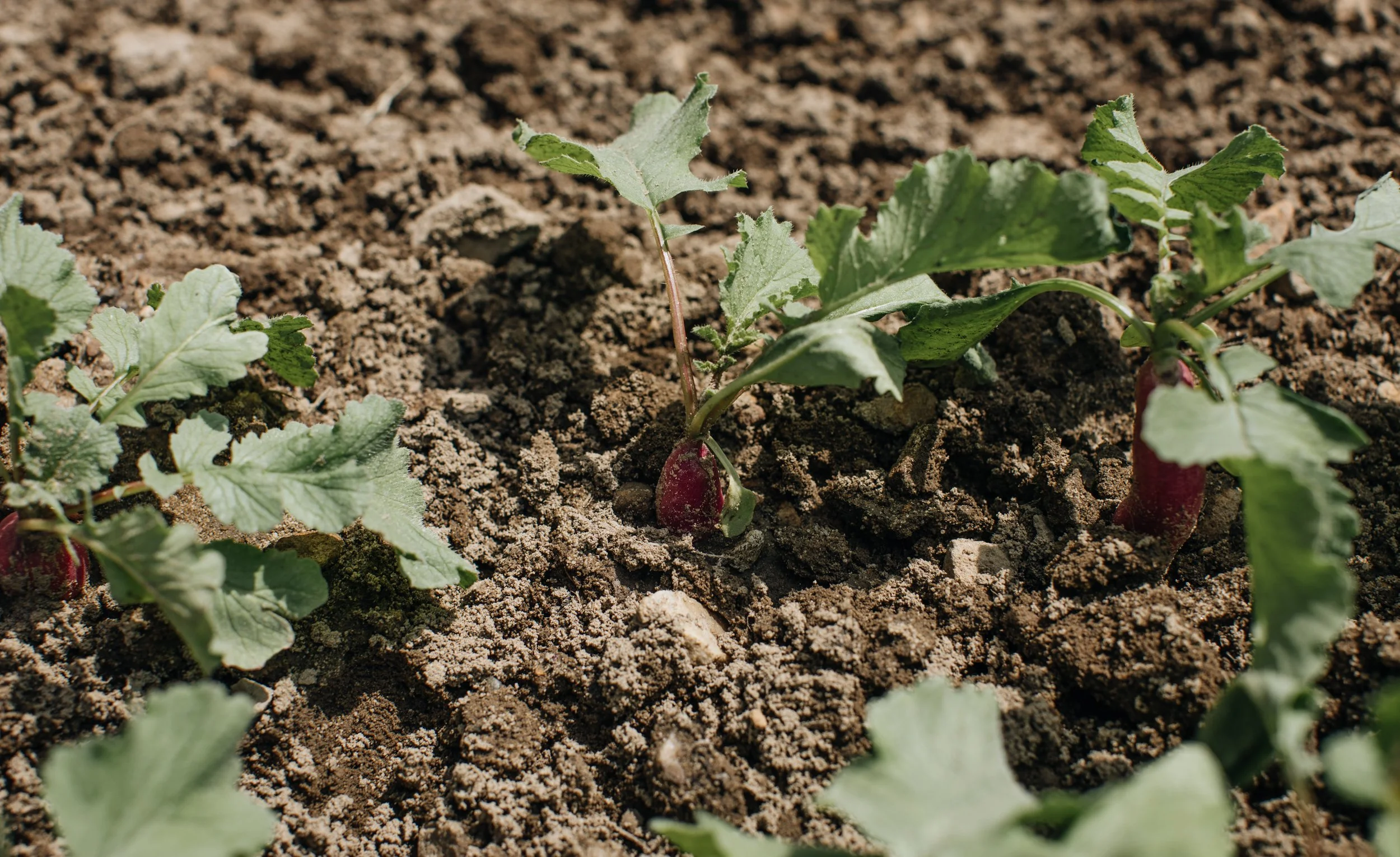Growing Radish
I’ll never forget when I was in my late teens and just beginning my own venture into the practice of gardening, one of the first seeds I sowed were radishes. They were the only real success I had that first season, but they kept my hopes high and desire to learn more about gardening strong! If you’re new to gardening, I highly recommend adding some radish seeds to your inventory.
Radishes come in so many varieties — a vast array of colors, shapes, sizes, tastes — and most are fairly easy to grow. They are quick growers, only taking about three to six weeks to be ready to harvest, so if you’re just starting out on a new gardening venture yourself, they’ll help you see the fruits of your labor very quickly!
In our climate here in Pennsylvania, I find they grow and taste best when directly sown into the soil near beginning of the spring growing season in mid to late May, or near the end of the summer in late August or early September. Gently make a shallow hole or row with your fingers (or I like to use the handle of my trusty favorite cultivator rake) about 1/4” to 1/2” deep into the soil, and sprinkle in your seeds and cover. Depending on the variety and end use, you can sow heavy and close together or give a bit of space following seed packet recommendations, but most can be sown on the closer side and then thinned out once they sprout.
Fun Tip:
When thinning out your radishes, harvest them to use in salads or on sandwiches, or to make a pesto — radish microgreens give a burst of peppery flavor, slightly more intense than mature radishes.
I got a bit behind with my seed sowing this year (better late than never though!), so my mid-June sowings are now ready to harvest here in mid-July, and I’m finding the heat has made them just slightly more tough in texture than I prefer, but still a good flavor. I grew the variety French Breakfast this year in their own section in our sunny south-facing raised bed, in loose soil that had a little bit of compost amending back last fall. If I had sown them in my other beds with my lettuces like I’ve done in years past, I’m thinking they might have fared better in our recent heatwaves and had the more crisp and tender texture that I like since I was sowing on the later side/into the hot season. With that said, they do make a great companion plant, so don’t be afraid to grow them right alongside or in between herbs like parsley or dill, leafy greens, bean plants, peas, etc. They do well with full sun exposure, but can tolerate partial shade too.
Once seeds are planted, for watering I keep it simple. I aim to keep soil moist, but not saturated. A gentle sprinkle once a day (if there’s no rain) in the morning or evening hours has worked well for me. We’ve had a pretty rainy summer so far this year, so there’s not been a need for a lot of watering.
That’s really all there is to it! I’ll also lightly rake around the plants to loosen up the surface of the soil if rain has compacted it and remove weeds, and then monitor to see when their bright tops are pushing through the soil and ready to pull. Don’t hesitate to pull and test where they’re at, better to harvest slightly earlier than later since if radishes get too mature they’ll start to toughen up and split.
So, if you’ve sown and grown your radishes, and now it’s time to harvest, what to do with them? I was stumped at this that first season in my teens and ended up only using a small amount of what I grew, but now I’m finding there’s lots to do with them actually. The easiest way I eat radishes is to simply chop them up into thin little slices to throw into a salad. My family and I aren’t really keen on spicy foods, we like a milder kick here and there in our tastes, and I do find radishes can be right on that borderline of too bitter or spicy sometimes. If they’re tasting a bit too hot, another thing I’ll do is roast them with other veggies and butter to help mild down the flavor. I like to think of them like I do ground pepper. You don’t need a lot, but there’s so many dishes they can complement. I stumbled across this radish butter recipe this spring and will be giving it a try this week as well, it looks delicious and I think would be great slathered on some sweet corn on the cob. Radish leaves can be eaten too, cooked and added to pasta, chopped and made into a pesto, even dried and used for tea. Just be aware if you eat the leaves raw they do have little hairs that can be prickly and tingle in your mouth, but are perfectly safe to eat.
Expanding beyond eating radishes, did you know you can use them topically in homemade face masks or as skin toner, etc.? They are high in antioxidants/vitamin C and have anti-inflammatory properties. And if I can’t make use of all the radishes I grow, I share the abundance with our chickens (grated radish makes a fun treat for them) and our wildlife, or put into the compost pile, or even just leave them unharvested in the soil to help aerate and add amendments as they decompose over winter.
Have you or do you think you’ll try growing radishes this season?





